A date with Pluto today

At these hours, the most important meeting of 2015 takes place, and maybe the whole decade. The NASA New Horizons spacecraft is in the most active phase of its mission - meeting with Pluto, and studying this dwarf planet and its surroundings. The spacecraft will rush through the system of Pluto and its satellites in a day, collect several gigabytes of scientific data, and fly away to the Kuiper belt, the Oort cloud and to other stars.
The history of Pluto began even before its discovery. Back in the 40s of the XIX century. scientists have determined that there are more planets beyond the orbit of Uranus. This was indicated by its features of the orbital rotation. As a result, Neptune was discovered almost immediately, but the behavior of Uranus indicated that there must be another disturber of gravitational calm. When, finally, in 1930, Pluto was found, the scientists decided - this is it! Another triumph of science. True, according to initial estimates, it turned out that the planet found should be no less than Jupiter.

')
Then, throughout the XX century. Pluto's mass was recalculated in the direction of decreasing, until finally it was concluded that Pluto had nothing to do with the behavior of Uranus. At the end of the last century, the possibilities of astronomical technology allowed the discovery of a whole family of trans-Neptunian objects. Most of the non-Zeppet bodies turned out to be asteroids and comets that fill the Kuiper belt. But some bodies were not much smaller than Pluto itself, so astronomers had a problem: did they declare them planets or did they deny Pluto of this title?

In 2006, the question was not in favor of Pluto. Since then, the correct answer to the question "How many planets in the solar system?" such is: "eight planets and five dwarf planets".
After "degrading" interest in Pluto only increased. He still remains the largest body in the Kuiper belt, and, among other things, he, along with his companion Charon, is a generally unique body in the solar system - a dual planet. The closest analogy of such a system is the Earth and the Moon. In third place - the Sun and Jupiter. The point is the mass ratio of the main body and the satellite. In fact, Charon does not rotate around Pluto, but both of them rotate around the point of the space between them, which is the center of their masses.

The physics of such a rotation can be represented by observing the hammer thrower before the throw.
The Earth and the Moon also have such a common center of mass, but it does not go beyond the Earth, so we are not considered a dual planetary system. Although astronomers have not yet agreed on what is considered a double planet.

In January 2006, the mission of New Horizons launched to Pluto. Its creators sought to minimize the time to reach the dwarf planet, so they made a relatively small and light machine of about 650 kg (and cost about $ 650 million), which was greatly dispersed by the Earth. Fuel was simply not provided for braking, therefore study from the span.
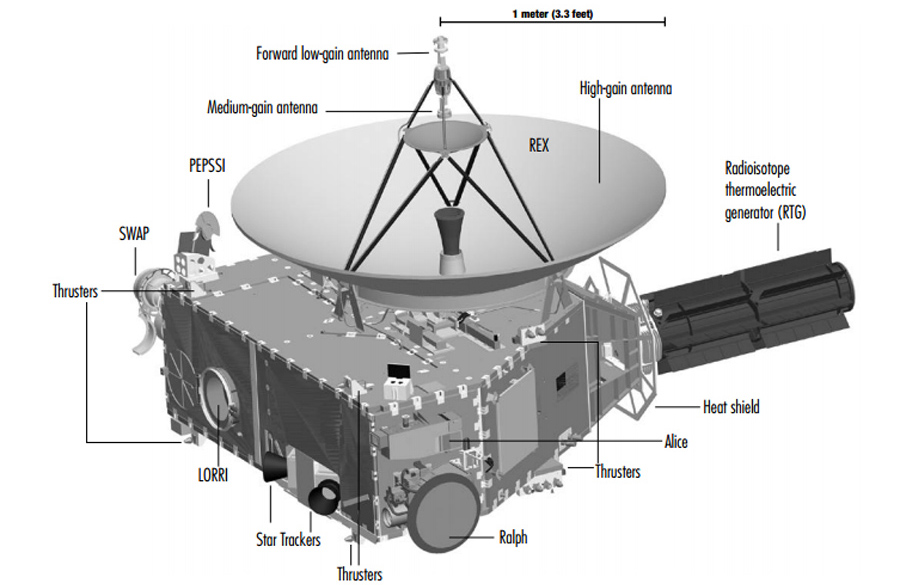
There are several reasons for this decision. The task of entering orbit can be solved in various ways that will require much more time, increasing the mass, funds for development and management. Pluto is too light for its gravity to help it go into orbit, and the atmosphere is insignificant to try to use it for braking. The key parameter is flight time. It was possible to load more fuel, and not accelerate as quickly, use economical trajectories and gravitational maneuvers, such as, for example, Rosetta flew or Juno is flying now. But it would have required much more time.

One can understand the scientists who wanted to see far Pluto as soon as possible, but it seems to me that the nine-year flight was convenient for the officials who distributed the budget. It would be much more difficult to explain to them the perspective of the mission, which will give the result in twenty years, when the majority of those who approved the mission will leave at least retirement.
Despite the straightforwardness of the New Horizons trajectory, it was possible to squeeze out additional scientific information from its flight — study the Jupiter system a year after launch (for comparison, Juno using economical orbits gets 5 years to Jupiter). New Horizons swept at a distance of 2.3 million km from the giant planet and held a training session for future major work on Pluto.
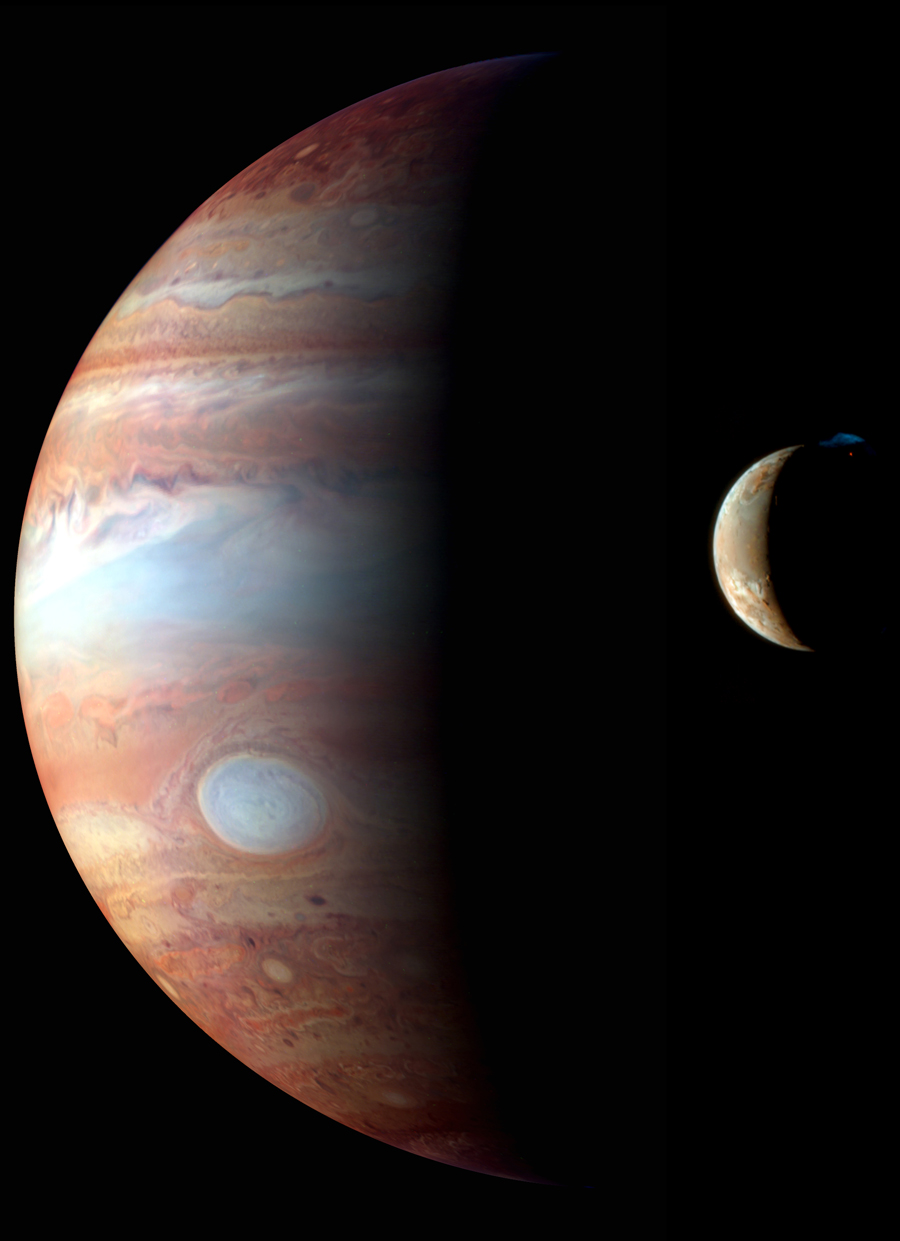
The exercises with Jupiter Io's satellite were especially successful. In many ways, it is similar to Pluto, so it paid special attention to it.
Shooting with the long-range camera LORRI showed a dynamic picture of the eruption of a giant volcano.
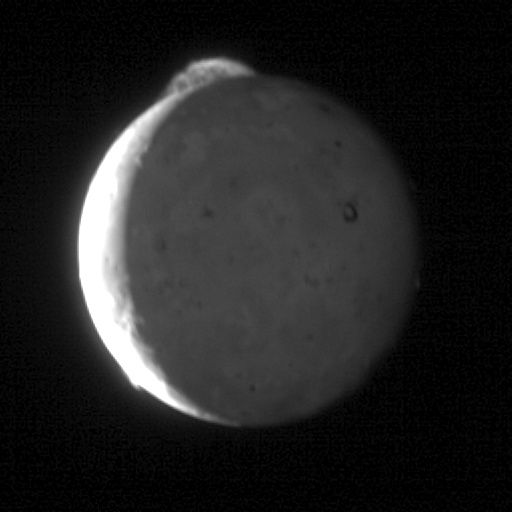
Volcano Tsvvatar throws lava for 300 km. But he is not so alone there. Observation of the shadow side of Io with a long exposure using three New Horizons optical instruments showed the extraordinary geological activity of the satellite of Jupiter. At the same time, we can see the capabilities of the spacecraft.

In a black and white shot of the LORRI camera with a long exposure, you can see the fountains of lava, which is thrown out of the volcano, and its mouth glows brightly. The LEISA infrared hyperspectrometer made it possible to view many other hot volcanoes on the shadow side of Io, even those that were previously unknown. The MVIC color camera allows you to see the difference in the color of the main brownish surface of Io and the blue hot lava of the volcano. Io's volcanic activity is the result of gravitational interaction with Jupiter. The possibility of similar processes between Pluto and Charon is not excluded, and the depths of the dwarf planet can also be warmed up, and breaks of hot geysers can be found on the crust. If they are on Pluto, then LEISA will find them.
Read more about New Horizons optical devices
About optical devices New Horizons must be said separately. Its main caliber, LORRI, is a Richie-Chretien mirror telescope with a main mirror diameter of 20.8 cm and a focal length of 2630 mm. His field of view is 0.29 degrees, which means that he would only see ⅔ of the Moon if he looked from the Earth. The LORRI camera is equipped with a one-megapixel CCD panchromatic matrix. The best resolution on the surface of Pluto, obtained by this camera will be just over 100 meters per pixel.
For comparison, NASA leads Manhattan.

The second Ralph device is, in fact, two instruments using one telescope. The focal length of Ralph is four times smaller than the LORRI, so all visible objects are worse in quality than the long-range camera. But the width of the visible field is more than 20 times (5.7 degrees). Moreover, Ralph is not a camera, because Instead of a matrix, scanning rulers are used. The color scanner is the MVIC device, which has seven scanning lines made using TDI CCD technology. Four color scanning lines see infrared, red, blue, and methane in the near infrared range. Those. by simple addition of the obtained images it is impossible to create an image in the visible range (the Electro-L satellite sees the Earth in the same way).

LEISA has a telluride-cadmium-mercury infrared sensor that contains 256x256 sensitive elements. The elements are located in lines of 256 pieces and work in the push-broom mode, i.e. Each sensor line senses its own infrared wavelength (its own individual color). This makes the LEISA an infrared hyperspectrometer, since he sees in high spectral resolution. Such opportunities will allow to conduct a qualitative geological scan of Pluto and determine the rocks from which the crust of the dwarf planet is folded.
On the NASA diagram, you can see the ratios of the captured visible field by various optical instruments:

For comparison, NASA leads Manhattan.

The second Ralph device is, in fact, two instruments using one telescope. The focal length of Ralph is four times smaller than the LORRI, so all visible objects are worse in quality than the long-range camera. But the width of the visible field is more than 20 times (5.7 degrees). Moreover, Ralph is not a camera, because Instead of a matrix, scanning rulers are used. The color scanner is the MVIC device, which has seven scanning lines made using TDI CCD technology. Four color scanning lines see infrared, red, blue, and methane in the near infrared range. Those. by simple addition of the obtained images it is impossible to create an image in the visible range (the Electro-L satellite sees the Earth in the same way).

LEISA has a telluride-cadmium-mercury infrared sensor that contains 256x256 sensitive elements. The elements are located in lines of 256 pieces and work in the push-broom mode, i.e. Each sensor line senses its own infrared wavelength (its own individual color). This makes the LEISA an infrared hyperspectrometer, since he sees in high spectral resolution. Such opportunities will allow to conduct a qualitative geological scan of Pluto and determine the rocks from which the crust of the dwarf planet is folded.
On the NASA diagram, you can see the ratios of the captured visible field by various optical instruments:

After the passage of Jupiter, New Horizons was sent to hibernation, to save equipment resources. Only occasionally was it awakened for rechecking and maintenance. Sometimes they woke him up for work: to shoot asteroids flying in the distance or Neptune.
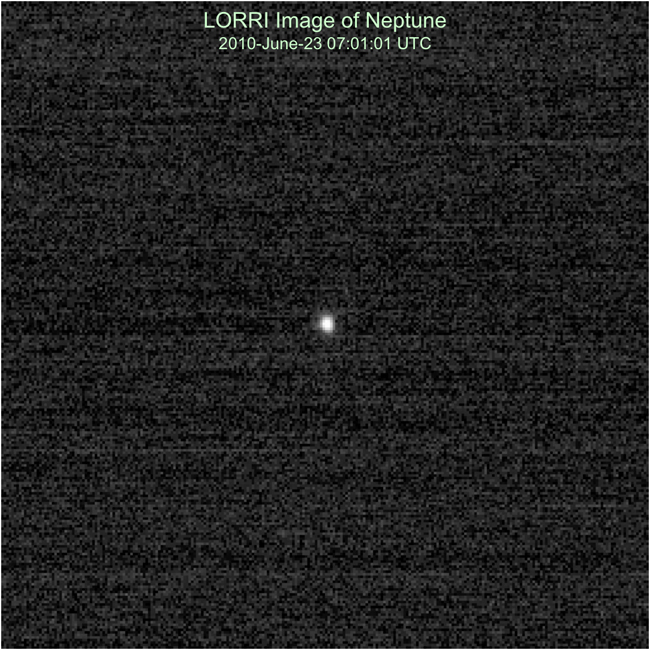
In 2015, it is time to return to active work. Already in January, New Horizons began to survey the systems of Pluto and Charon, but its resolution did not yet reach the capabilities of the Hubble space telescope. With this near-earth telescope, the last of the known satellites of Pluto was discovered in 2012, but scientists still hope to find satellites or rings. It is indicative that New Horizons started when Pluto knew only three satellites.
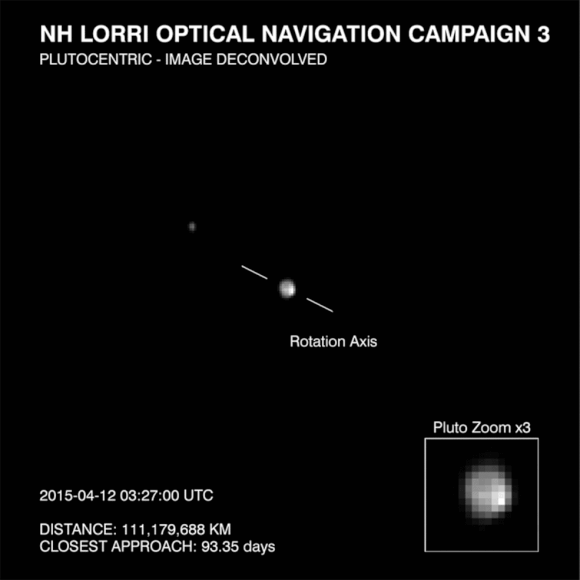
On May 5, the optical capabilities of the LORRI camera caught up with the capabilities of Hubble, and from that moment on, the scientific significance of the New Horizons began to grow. Almost every new picture allowed us to confidently say "this we have not seen before." Although at first glance, the pictures remained indistinguishable. Only having shortened the distance several times, New Horizons began to delight with new details.
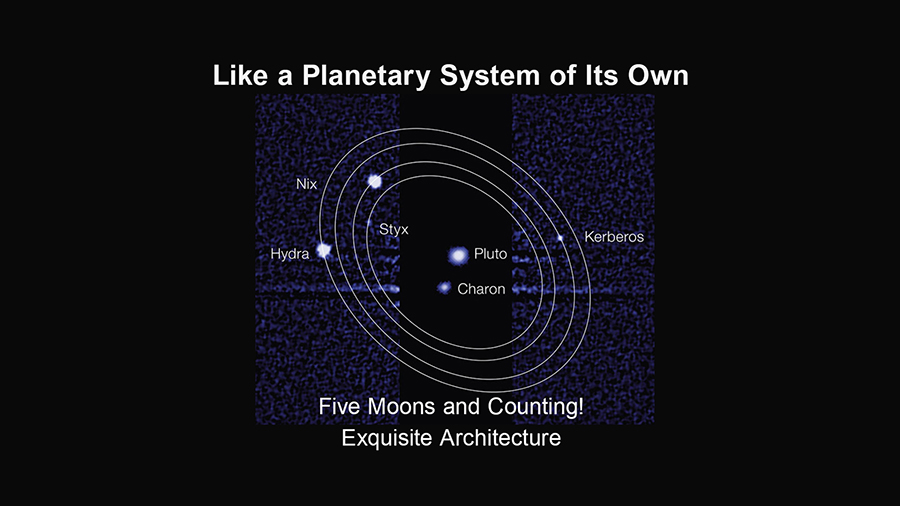
As expected, the surface of Pluto was very heterogeneous. Bright white spots on it coexist with coal black. This imbalance is not often observed in the solar system. One can only recall Saturn's satellite Iapet, whose ice surface is partially covered with dust from the Saturn's ring. Or bright spots of Ceres come to mind.
Scientists have yet to learn the origin of the various types of surface and the causes of the emergence of complex relief forms. But the current hypothesis of the collision of proto-Pluto and proto-Charon already points to the catastrophic events that occurred here at the dawn of the solar system.

On the satellite of Pluto, Charon, is also not so simple. It turned out to be very similar to our Moon: it also has two hemispheres that are different from each other, and on the one that is deployed towards Pluto, there is also a dark "sea".
New Horizons should study not only the surface of Pluto and satellites, but look for the atmosphere from both. For this, the device is equipped with an Alice UV spectrometer. He is now observing Pluto’s atmosphere to determine its composition, origin, distribution, and loss dynamics. For a more detailed study of the atmosphere, the flight trajectory provides for the flight of New Horizons through the shadow, first Pluto, then Charon. This will allow not only to find hot spots on the bodies of the dwarf planet and satellite, but also to see the scattering of sunlight by the gas envelope of these bodies. Alice will be able to determine the gas composition of the atmosphere or atmospheres, if Charon has one.
A detailed diagram with a description of the passage can be seen in the infographic from Nature , which was kindly translated by the members of the VK-community " Open Space ".
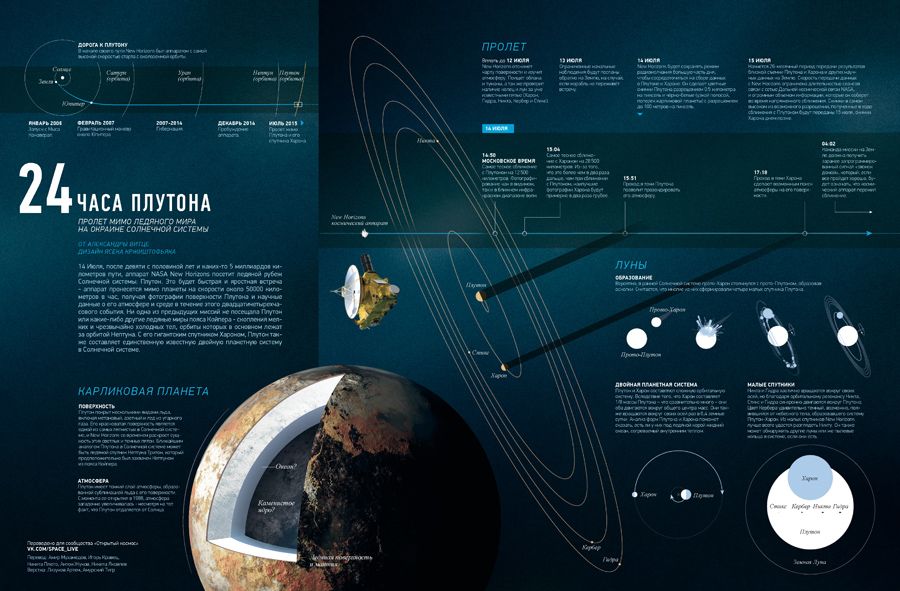
The picture is clickable.
Download pdf in the community .
As we see from the chronology of the span, now we have to wait 4 o'clock in the morning to find out whether NASA received a "call home", which will let us know that everything went as it should.
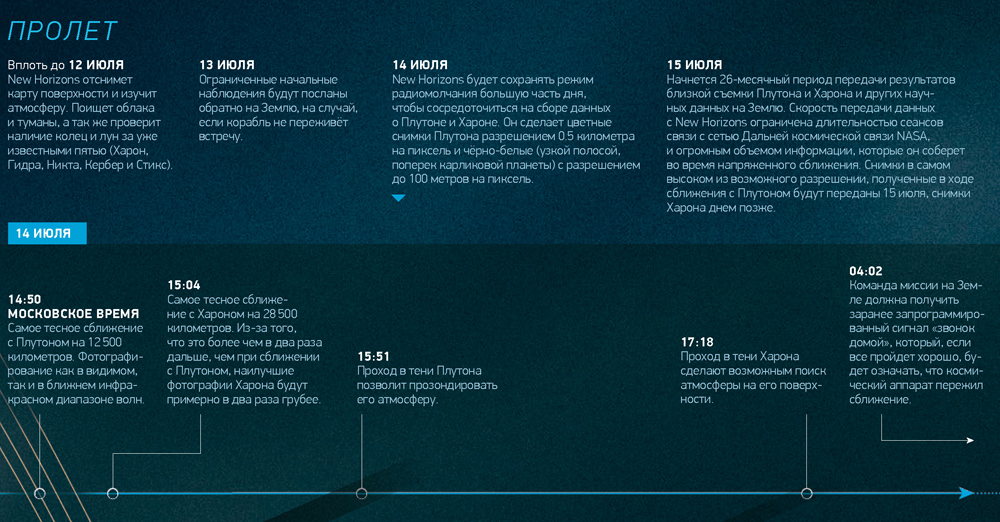
Its current movement can be monitored on the site whereispluto.info . Although there are not actual data, but calculated ones, and if the device crashes into an undetected satellite, we will not see this on the site. Besides, let's not forget that the signal from the device comes with a delay of 4.5 hours.
In addition to the optical means of study, New Horizons is equipped with instruments for recording plasma, ionized particles and cosmic dust, the use of radar is envisaged ... While the results of their work have not been reported.
The best shots of Pluto to Earth will be delivered on July 15, and Charon on the 16th. The entire amount of data will be transferred in about two years, so the various results of today's date with Pluto, we will find out the next three years.
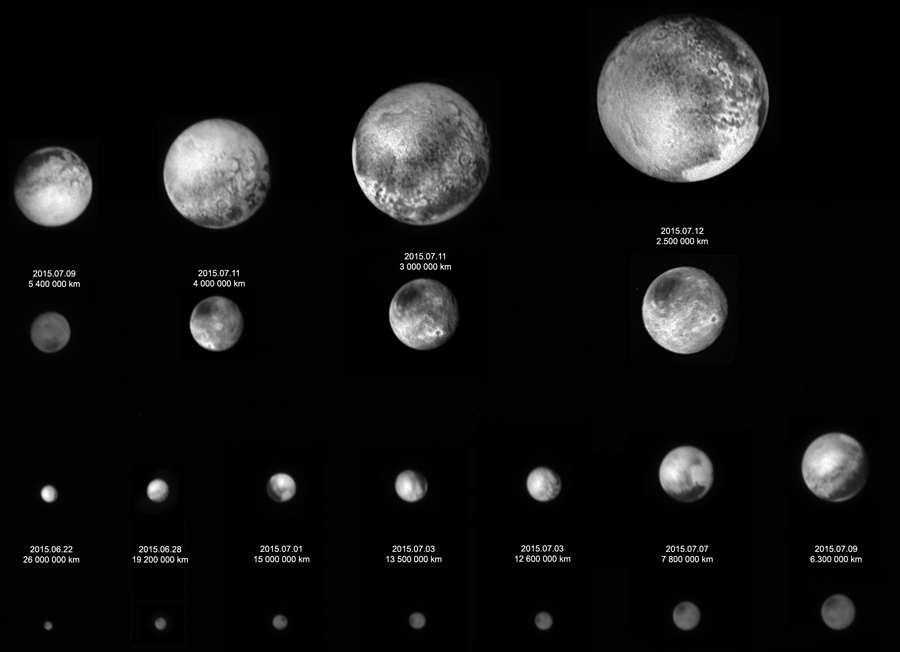
Clickable
In the meantime, New Horizons will try to “intercept” another 1 or 2 asteroids from the Kuiper Belt, thereby expanding the boundaries of human knowledge about this distant and icy region of the Solar System. Next, the path of the spacecraft will fly into the Oort cloud, and after thousands or tens of thousands of years of flight, he may also visit some nearby star system. Only we will never know about it. The energy release of the New Horizons radioisotope thermoelectric generator will continue for another 15 years, and then people will only have to say goodbye to it. But in the expanses of the universe will remain a piece of ashes of the discoverer of Pluto, Clyde Tombo, as the only representation of humanity in deep space. (A plutonium-238 RTG New Horizons will become the most distant part of Russia)
Source: https://habr.com/ru/post/367673/
All Articles